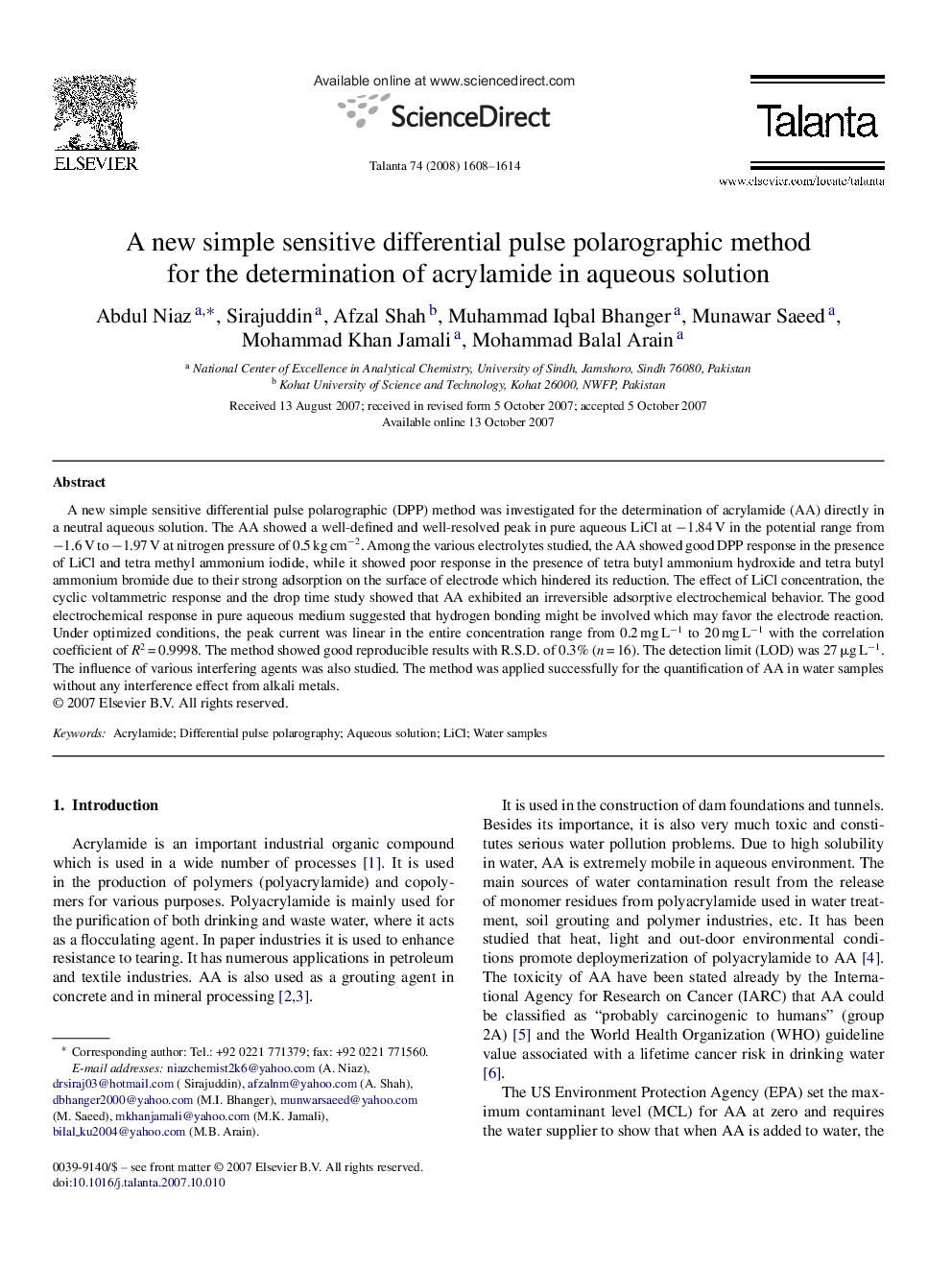| Article ID | Journal | Published Year | Pages | File Type |
|---|---|---|---|---|
| 1244562 | Talanta | 2008 | 7 Pages |
Abstract
A new simple sensitive differential pulse polarographic (DPP) method was investigated for the determination of acrylamide (AA) directly in a neutral aqueous solution. The AA showed a well-defined and well-resolved peak in pure aqueous LiCl at â1.84 V in the potential range from â1.6 V to â1.97 V at nitrogen pressure of 0.5 kg cmâ2. Among the various electrolytes studied, the AA showed good DPP response in the presence of LiCl and tetra methyl ammonium iodide, while it showed poor response in the presence of tetra butyl ammonium hydroxide and tetra butyl ammonium bromide due to their strong adsorption on the surface of electrode which hindered its reduction. The effect of LiCl concentration, the cyclic voltammetric response and the drop time study showed that AA exhibited an irreversible adsorptive electrochemical behavior. The good electrochemical response in pure aqueous medium suggested that hydrogen bonding might be involved which may favor the electrode reaction. Under optimized conditions, the peak current was linear in the entire concentration range from 0.2 mg Lâ1 to 20 mg Lâ1 with the correlation coefficient of R2 = 0.9998. The method showed good reproducible results with R.S.D. of 0.3% (n = 16). The detection limit (LOD) was 27 μg Lâ1. The influence of various interfering agents was also studied. The method was applied successfully for the quantification of AA in water samples without any interference effect from alkali metals.
Related Topics
Physical Sciences and Engineering
Chemistry
Analytical Chemistry
Authors
Abdul Niaz, Sirajuddin Sirajuddin, Afzal Shah, Muhammad Iqbal Bhanger, Munawar Saeed, Mohammad Khan Jamali, Mohammad Balal Arain,
